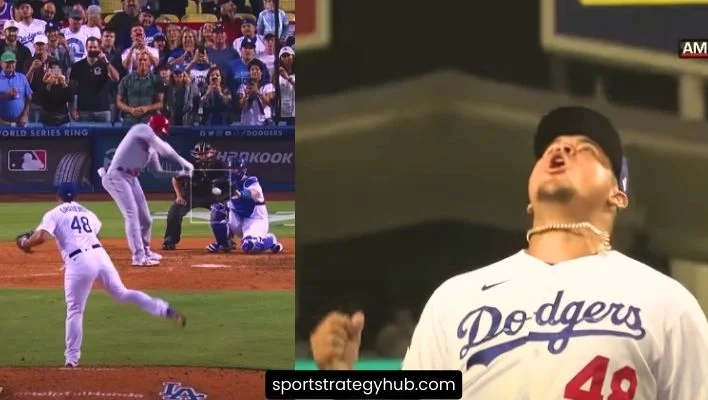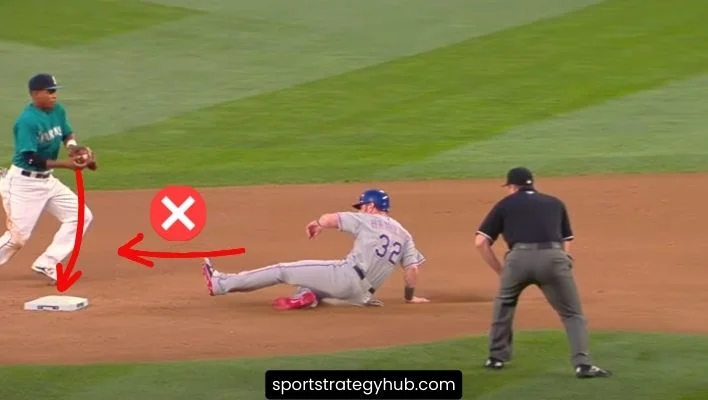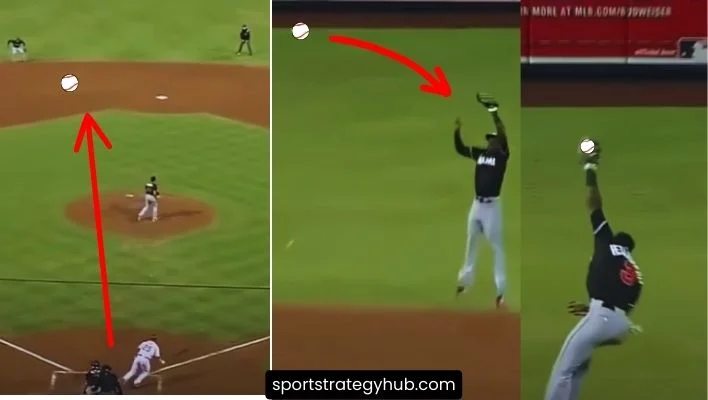How Many Outs Are There in an Inning of Baseball: Rules of Game
Baseball combines strategic planning, expertise, and accuracy. At the heart of this sport lies the principle of outs. This piece delves into that topic. “How many outs are there in an inning of baseball?” We will delve into the structure of an inning, the different methods of recording outs, and the impact that outs have on the game. Whether you’re a diehard fan or a newcomer to the sport, understanding the concept of outs is essential to fully grasp the dynamics of baseball.
What is an Inning in Baseball?
An inning is the basic unit of play in baseball, marking a segment of the game where both teams get the chance to bat and field. It splits into two sections: the top half and the bottom half. In the top half, the visiting team tries to score by batting, and the home team aims to stop them by fielding. The roles switch in the bottom half. The batting team’s objective is to score runs, while the fielding team’s goal is to make three outs to end the batting team’s turn.
How Many Outs Are There in an Inning?
In the standard structure of baseball, each team has the opportunity to make three outs while on defense, totaling six outs in each inning. This means the visiting team will try to make three outs against the home team in the top half of the inning, and then the home team will have the chance to return the favor in the bottom half. These outs are crucial for the defense to end the offensive team’s batting turn and switch roles, keeping the game moving forward.
The Process of Recording Three Outs to End an Inning
There are several ways to record outs in baseball. Let’s explore the different methods and how they contribute to ending an inning.
Strikeouts
One common method of recording outs is through strikeouts. The pitcher strikes out a batter when they miss or fail to hit the ball after three strikes are delivered. The catcher must catch the third strike for it to count as a strikeout. If the catcher fails to catch the ball, the batter has the opportunity to run to first base if it is unoccupied or if there are already two outs.

Force Outs

Force outs are another method of recording outs in baseball.A force out happens when a player on defense, holding the ball, reaches a base before the base runner can get there. This situation often arises with a runner on first and the batter grounding the ball. The defensive player fields the ball and throws it to the base, forcing the runner out and recording an out for the defensive team.
Fly Outs

A fly out takes place when the batter sends the ball airborne and a player on defense catches it before it lands. This can happen in the outfield or within the infield. When a defensive player catches a high fly ball hit by a batter, it counts as a fly out, resulting in an out for the offensive team.
Tag Outs

A tag out occurs when a defensive player touches a baserunner with the ball before the runner can reach a base. This can occur during a stolen base attempt or when a base runner is caught in a rundown. If a base runner is tagged before reaching a base, it results in a tag out and an out for the offensive team.
Consequences of Not Recording Three Outs in an Inning
Failing to record three outs in an inning can have significant consequences for the defensive team. It provides the offensive team with additional opportunities to score runs and extend their inning. This can shift the momentum of the game and put the defensive team at a disadvantage. Therefore, recording three outs is crucial for the defensive team to regain control and prevent the opposing team from scoring.
Factors That Determine the Number of Outs in a Baseball Game
Multiple elements can affect the overall count of outs during a baseball match. Let’s explore some of these factors:
- A Complete Game Consists of 54 Outs: In a standard baseball game, both teams have the opportunity to play nine innings. An inning comprises six outs, with each team accounting for three, totaling 54 outs in a complete game.
- If the home team has the lead following the top half of the ninth inning, playing the bottom half is unnecessary.
- The game concludes early, resulting in fewer outs being played.
- Mercy Rule Ends a Game Early: In certain leagues or age groups, a mercy rule may be in effect. This rule allows for the early termination of a game if one team has a significant lead over the other. Consequently, the game will record fewer outs.
- Weather Ends a Game Early: Adverse weather conditions, such as rain or lightning, can force the early termination of a baseball game. Should weather cause the cancellation of the game, the teams might play fewer than the standard nine innings’ worth of outs.
- Extra Innings Are Needed to Determine the Winner: In the event of a tie game after nine innings, extra innings may be played to determine the winner. Teams continue playing extra innings beyond the standard nine innings until one team outscores the other to determine a winner.
- This results in playing more outs than the standard nine innings.
- Some Baseball Games Are Scheduled for Fewer Than 9 Innings: Most baseball games are scheduled for nine innings. However, games like doubleheaders or exhibition matches may have fewer innings.
- This situation may lead to a reduced count of outs executed in the game.
- Forfeited games can result in no outs being played. If one team fails to field a sufficient number of players or violates league rules, the game may be forfeited.
- Under these circumstances, no further outs are recorded, and the victory is granted to the opposing team.
Rules of The Game
The rules of baseball dictate the gameplay and the recording of outs. The league or governing body establishes these rules, creating a framework for fair play and competition. Grasping these regulations is crucial for players, coaches, and supporters to thoroughly enjoy and understand baseball.
How Outs Affect the Game
Outs significantly influence the flow and strategy of a baseball game. They impact both the offensive and defensive strategies employed by each team. Let’s explore how outs affect the game:
- Offensive Strategy: Outs put pressure on the offensive team to maximize their opportunities and score runs efficiently.
- As the number of outs increases, the offensive team must adjust their approach. They need to make strategic decisions to keep the inning alive.
- Defensive Strategy: Outs provide momentum and motivation for the defensive team. Each out brings them closer to ending the inning and preventing the opposing team from scoring runs. The defensive team must maintain focus and execute their plays effectively to record outs and control the game.
- Scoring Opportunities: Outs limit the scoring opportunities for the offensive team. Each out reduces the number of baserunners and the likelihood of scoring runs. Conversely, for the defensive team, recording outs prevents the opposing team from advancing and scoring runs.
- Strategic Decision Making: Outs influence strategic decision making in baseball.
- Coaches must consider the number of outs, the score, and the situation on the field. They do this when making decisions such as stealing bases, sacrificing bunts, or attempting hit-and-run plays.
Frequently Asked Questions
In a nine-inning baseball match, each team can achieve 27 outs, totaling 54 outs in a standard game.
In Major League Baseball (MLB), each team has three outs per inning. This indicates a full inning has six outs: three for the offensive team and three for the defensive team.
A baseball game can have an unlimited number of extra innings. If the score remains tied after the first nine innings, extra innings will take place. The game extends until one team outscores the other.
Before completing nine innings, darkness can lead to the calling of a game. If umpires find the field unplayable or visibility significantly impaired, this can happen. In these situations, the game may be suspended or declared complete based on the innings played.
Conclusion
Grasping the idea of outs in baseball is vital for both players and enthusiasts. Each inning consists of three outs per team. The defensive team must record these outs to regain control and prevent the opposing team from scoring runs. The number of outs influences strategic decisions, scoring opportunities, and the overall dynamics of the game. Whether you’re watching a game at the ballpark or playing on the field, keep an eye on the outs. Appreciate the strategies that make baseball a fascinating sport.
